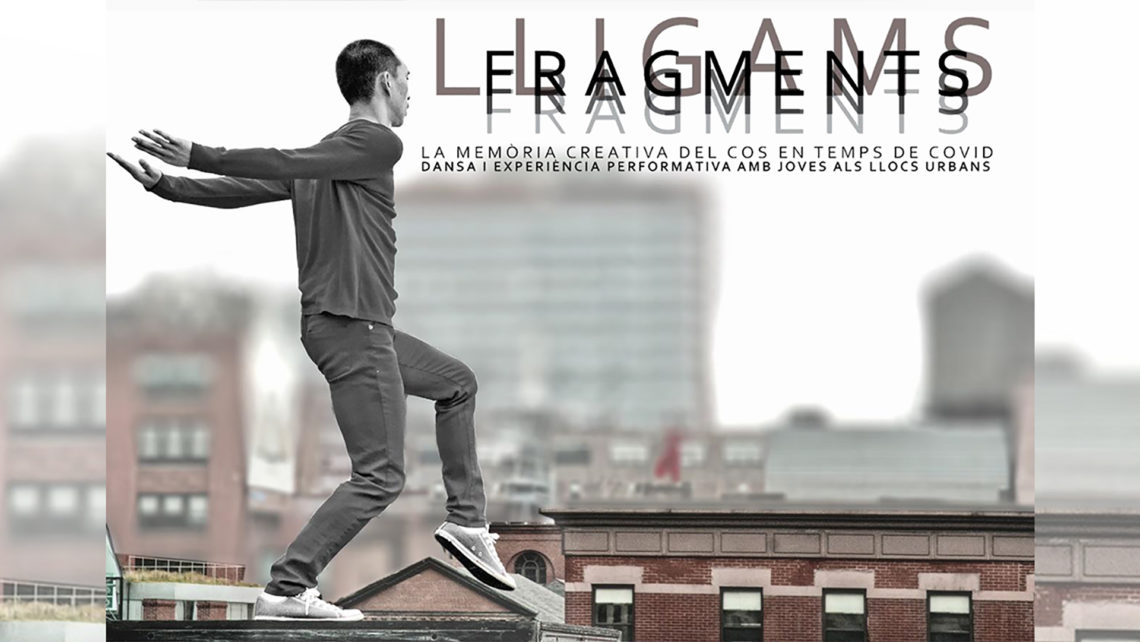
Fragments and Bondings
Fragments and Bondings
THE BODY CREATIVE MEMORY IN COVID TIMES
The Laboratory “Fragments and Bondings: the Body Creative Memory in Covid Times” (2021), was co-directed by Ana Moya (CHAIA, U. Évora), and Guille Vidal-Ribas, dance choreographer, performer, stage and movement director, cultural manager and researcher in the fields of street dances and theatre studies. It was developed in the framework of a transdisciplinary artistic applied-research, in the field of performing arts (site-specific dance, physical theatre, and performance) and theoretical thinking (performative and landscape studies and heritage), funded by The Cultural Initiative Support Office (OSIC), Cultural Department, Generalitat of Catalonia, Spain (CLT019/20/000154), in the format of an artistic research residency at ‘Xamfrà, Raval’s Music and Performance Centre’, Barcelona. The laboratory was implemented in the context of the district’s summer-activities addressed to adolescents in the neighbourhood, in July 2021. It engaged the participation of young people in Raval’s neighborhood at risk of social exclusion, among them unaccompanied young immigrants. We counted with 10 participants from 15 to 25 years old from a multicultural background (three from Morocco, three from Spain (Barcelona), two from Ghana, and two from Peru). Two participants were unaccompanied minors and one came from street social services. The Laboratory took place during two weeks from the 5th to 15th, July 2021, in afternoon sessions of four hours each.
In this work, developed in 2021, we were concerned with this traumatic present experience derived from Covid-19 pandemic and we were aware of the importance to design a pilot laboratory in which to apply an experimental methodology. Our objective was to stimulate environmental awareness and seek people’s physical and mental wellbeing. We wanted the participants to rediscover their bodies, the relationship they establish with others (the community), and the urban spaces they inhabit. We wanted to foster social and emotional resilience and environmental adaptation to the new circumstances. We used body movement improvisation, physical theatre techniques, and site-dance to explore body memory as a tool for defining new affective bonds with urban places, new environmental adaptation processes, and ‘body-place-community’ relational universes.
The sessions took place indoors in CESIRE (Center for Specific Pedagogical Resources to Support Innovation and Educational Research, Raval, Barcelona), and outdoors in eight different locations in Raval neighbourhood: two Parks (St. Pau del Camp Gardens and Tres Xemeneies), three squares (Blanquerna and Portal de la Pau; V. Moltalbán and S. Seguí; and Seguretat Social), two boulevards (Rambla del Raval and Rambla de Sta Mónica); and Drassanes docks.
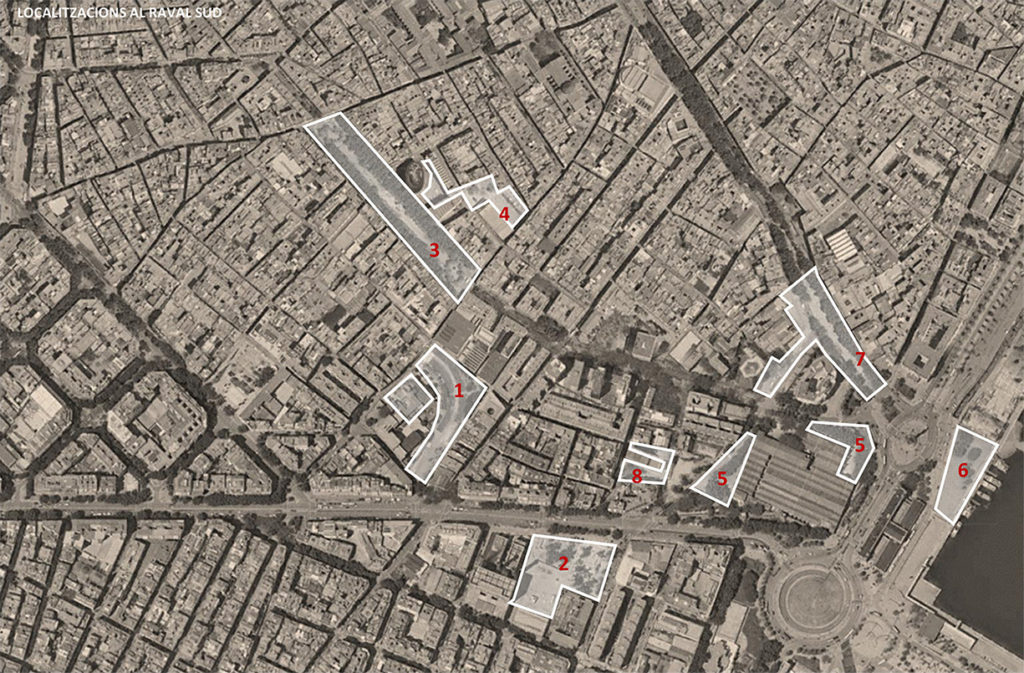
In this research, we use body movement improvisation, physical theatre techniques, and site-dance to explore body memory as a tool for defining new affective bonds with urban places, new environmental adaptation processes, and ‘body-place-community’ relational universes. We understand our everyday lived experiences in their embodied, environmental and social dimension. The body is experienced as an inner and mental-sensory space. Urban places are acknowledged as outer and environmental-atmospheric spaces. The community is valued as a space of relationships, identifications and differentiation.
We enquired about the relevant role that a creative body memory might play in the redefinition of a body-place-community dialogue, modified by the arrival of Covid-19. In this creative body memory exploration we observed the individual body memory built on impulses, actions, gestures, and bodily responses; and the collective body memory built on social exchanges and relationships. We also worked with two types of body memories: ‘situational’ and ‘intercorporeal’. The ‘situational” is a spatial memory, inseparable from multi-sensory and atmospheric perception and the ‘intercorporeal’ memory is based on relational embodied interactions and encounters. We also moved between the inner world (mental-sensory) and the outer world (environmental-atmospheric).
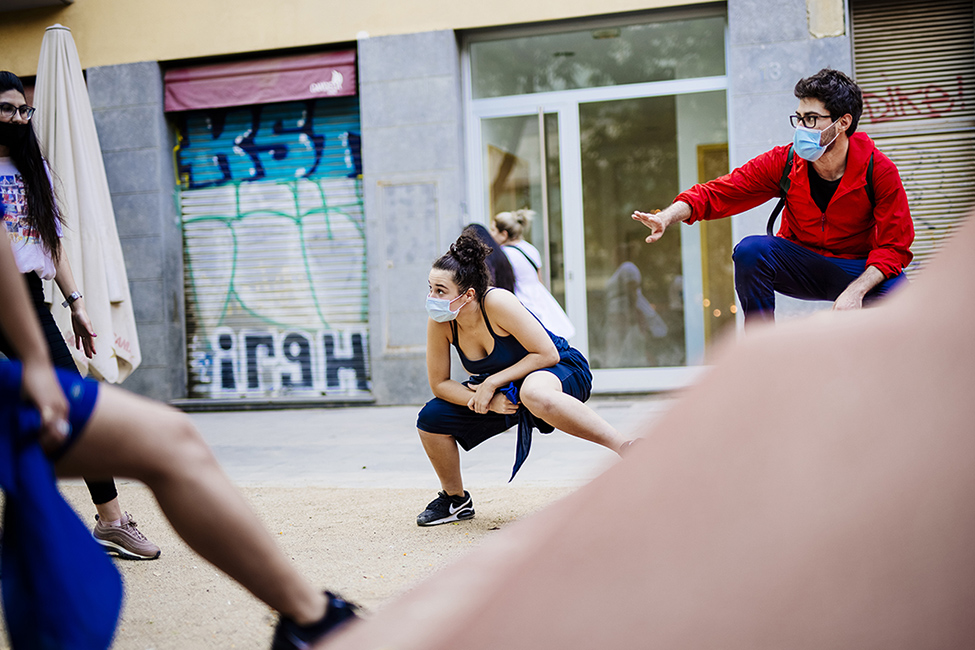 With the ‘environmental dimension’, our exercises aimed to detect the participants habits and tendencies when relating to the space and place they inhabit. Exercises encouraged them to find novel ways to interact with public spaces through a renewed sight, hear, and touch experience. They detected the particular atmosphere of places with their formal and rhythmic characteristics, and all physical components of those spaces were resources for their body creativity. Their actions in space affected how they transformed public spaces because we have an individual and collective capacity to re-signify places and their potential uses.
With the ‘environmental dimension’, our exercises aimed to detect the participants habits and tendencies when relating to the space and place they inhabit. Exercises encouraged them to find novel ways to interact with public spaces through a renewed sight, hear, and touch experience. They detected the particular atmosphere of places with their formal and rhythmic characteristics, and all physical components of those spaces were resources for their body creativity. Their actions in space affected how they transformed public spaces because we have an individual and collective capacity to re-signify places and their potential uses.
Inside this dimension we studied the following topics: 1. environmental awareness (reflection), 2. environmental involvement (intercorporeality), 3. the blending of bodies and environments (immersion), 4. embodied environmental absorption (interpretation).
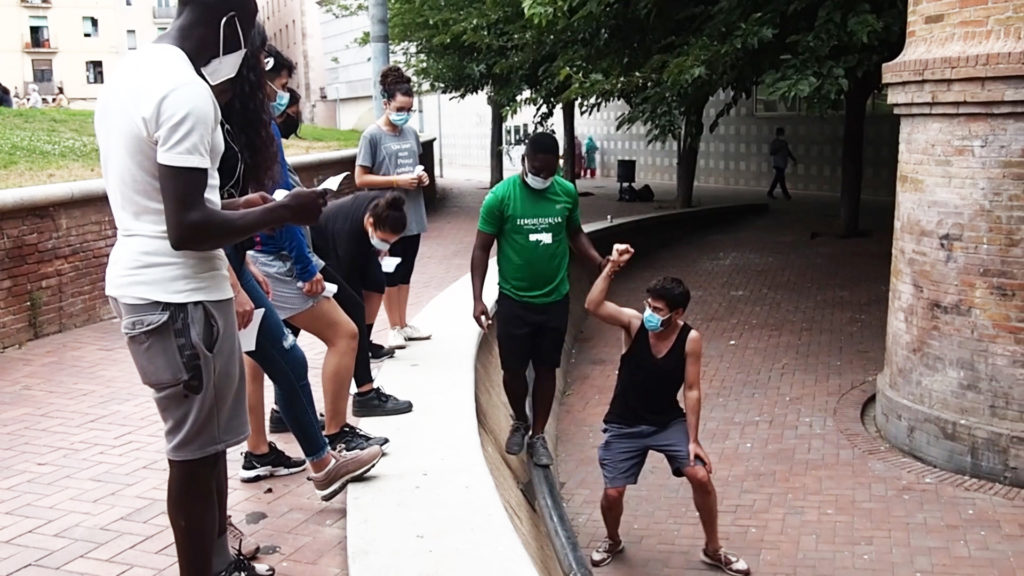
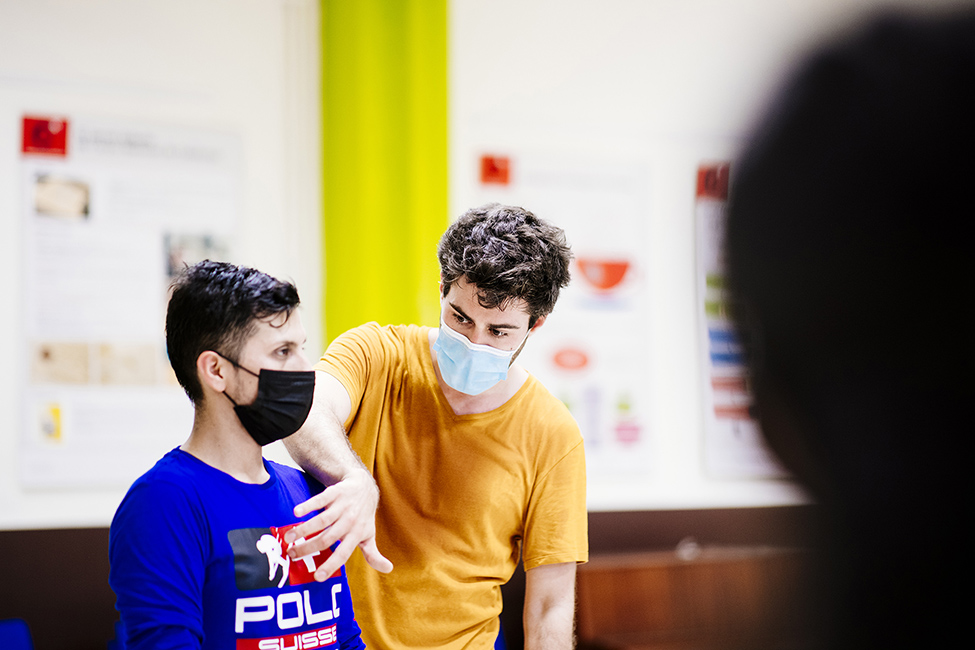 With the ‘corporeal dimension’, our exercises focused on noticing one’s own body, its shape and volume, its weight and motor possibilities. We motivated the awakening of the participants’ senses, stimulating their inner and outer perceptual capacity. It was important to explore their body’s natural rhythms with special emphasis on breathing, heartbeat and other external movement’s rhythms. According to different emotional states, the listening to those body changes foster a sense of presence and psychophysical availability.
With the ‘corporeal dimension’, our exercises focused on noticing one’s own body, its shape and volume, its weight and motor possibilities. We motivated the awakening of the participants’ senses, stimulating their inner and outer perceptual capacity. It was important to explore their body’s natural rhythms with special emphasis on breathing, heartbeat and other external movement’s rhythms. According to different emotional states, the listening to those body changes foster a sense of presence and psychophysical availability.
Inside this dimension we studied the following topics: 5.creative embodied replication of environmental experiences (recreation), 6. the evocation and assimilation of past embodied experiences (incorporation), 7. the radiation of the body’s pulsation (energies and rhythms) into the environment (projection).
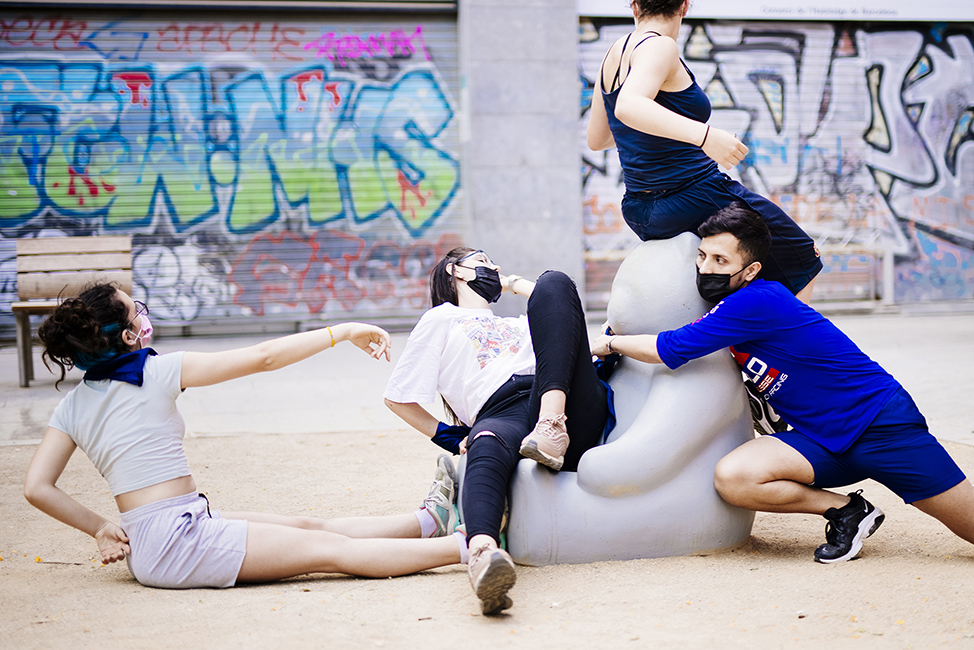
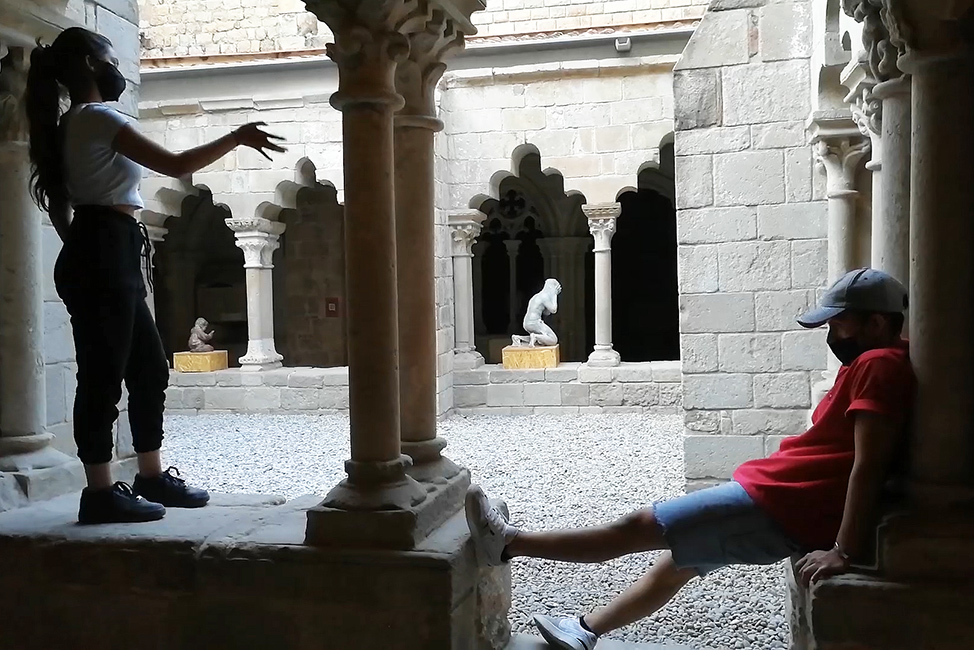 With the ‘social dimension’, our exercises detected one’s habits and tendencies when interacting with other people and we aimed to find novel ways of interrelating with others and in the group, using body language, spoken words, and shared actions. Exercises brought awareness about physical and ideological diversity and it inspired creative and artistic cooperation. We encouraged a caring attitude among participants through mutual listening, empathy, solidarity and teamwork.
With the ‘social dimension’, our exercises detected one’s habits and tendencies when interacting with other people and we aimed to find novel ways of interrelating with others and in the group, using body language, spoken words, and shared actions. Exercises brought awareness about physical and ideological diversity and it inspired creative and artistic cooperation. We encouraged a caring attitude among participants through mutual listening, empathy, solidarity and teamwork.
Inside this dimension we studied the following topics: 8. the involvement and dialogue with the other using an embodied language of communication (connection), 9. the sharing of embodied experiences (exchange), 10. the creative actions and performances with a willingly transformation of reality and the environment (desire).
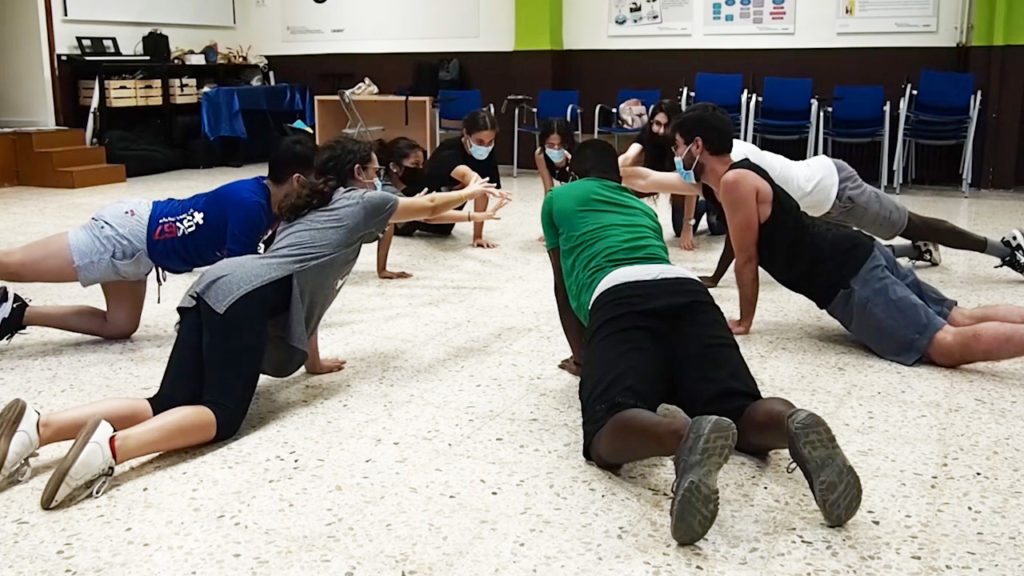
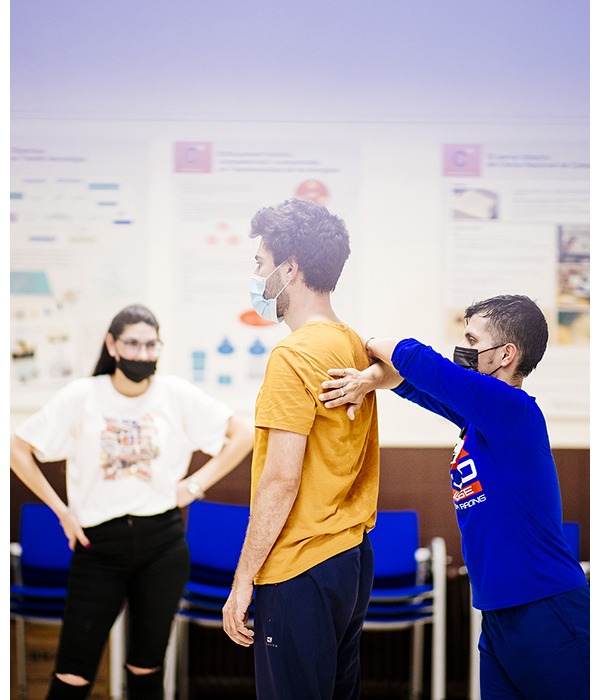
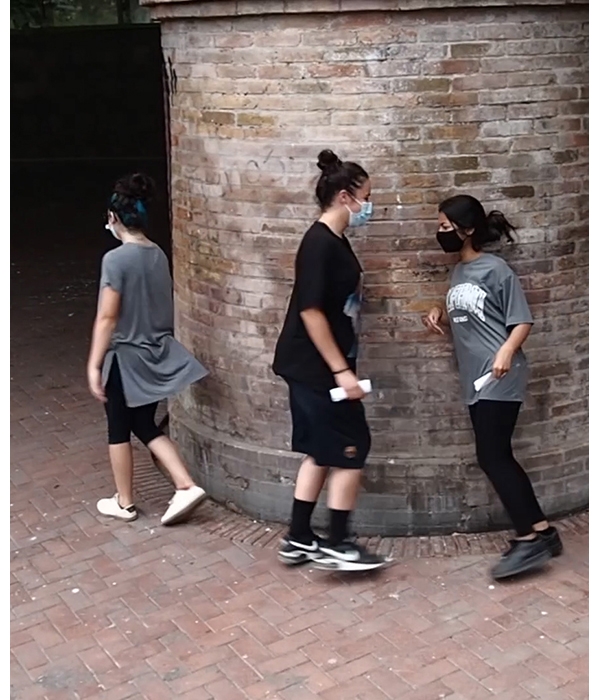
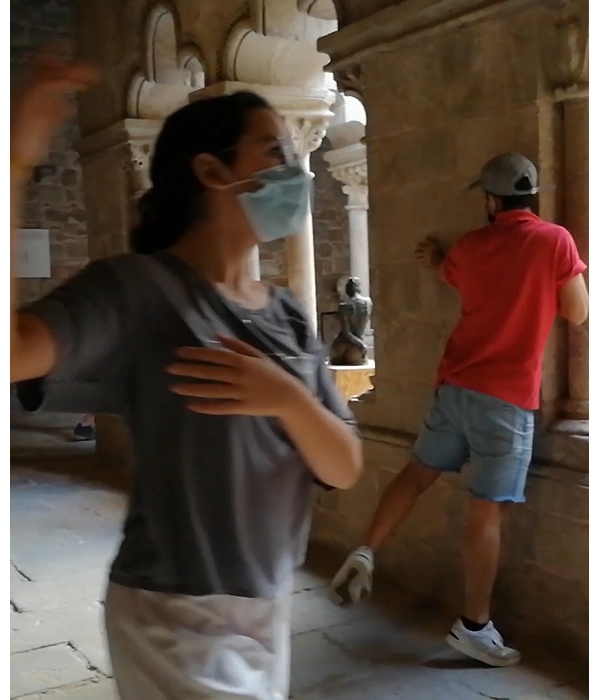
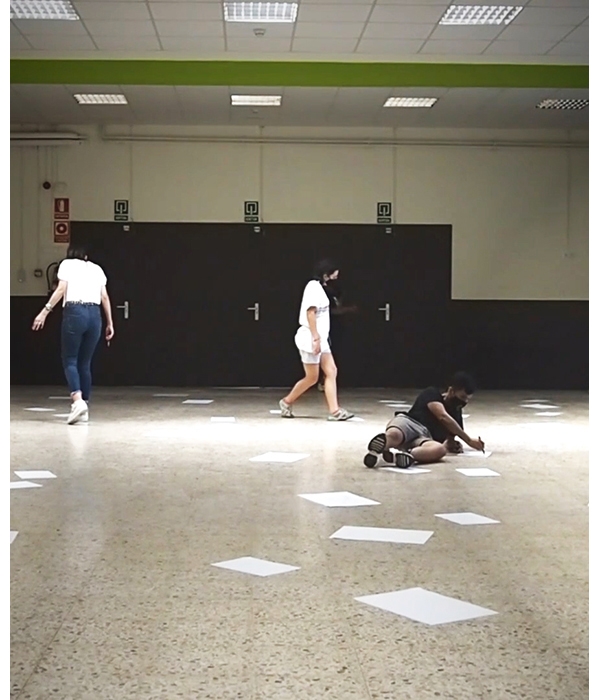
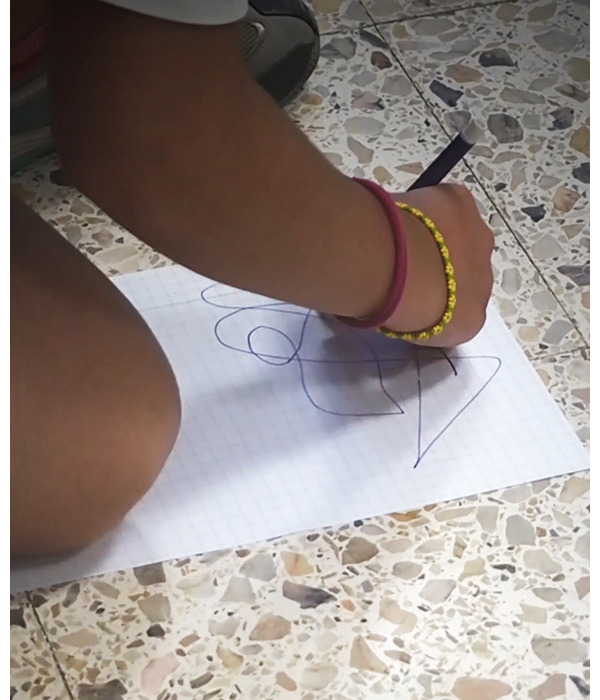
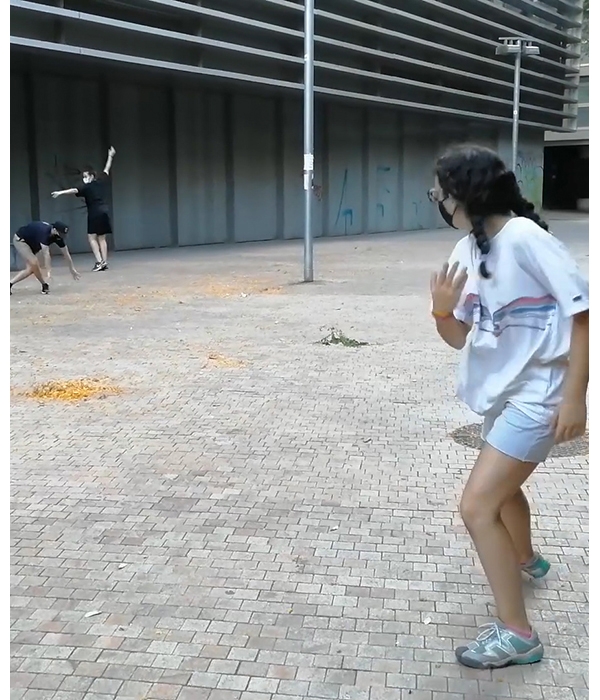
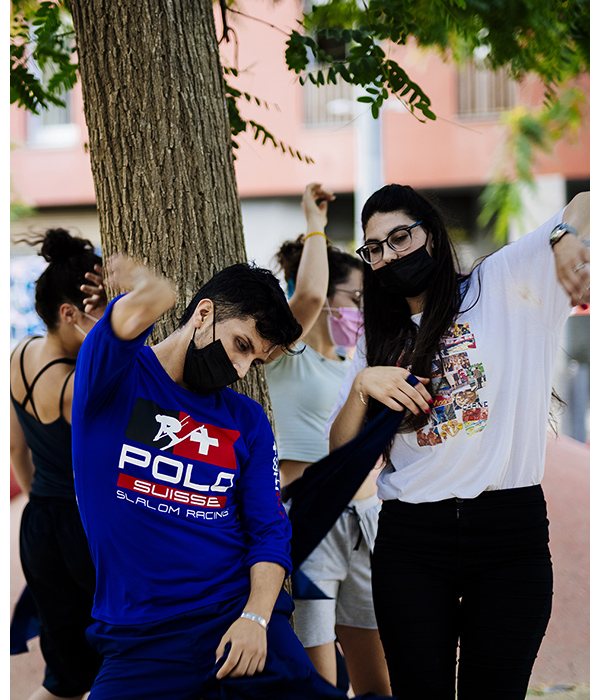
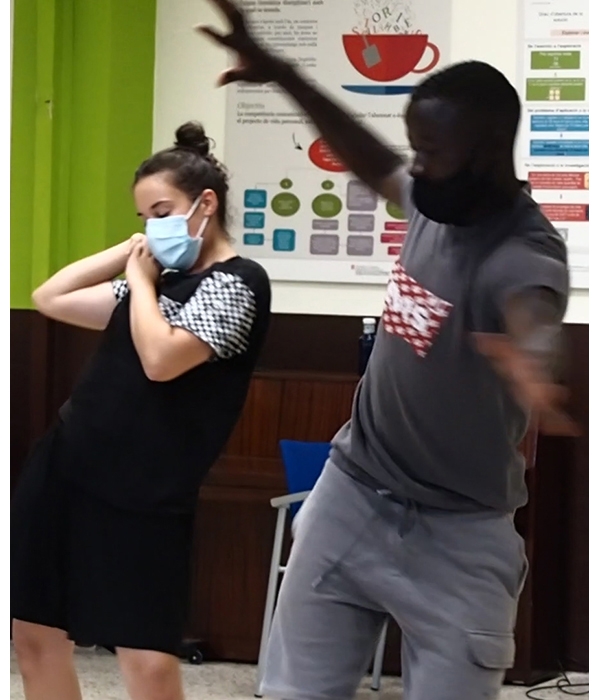
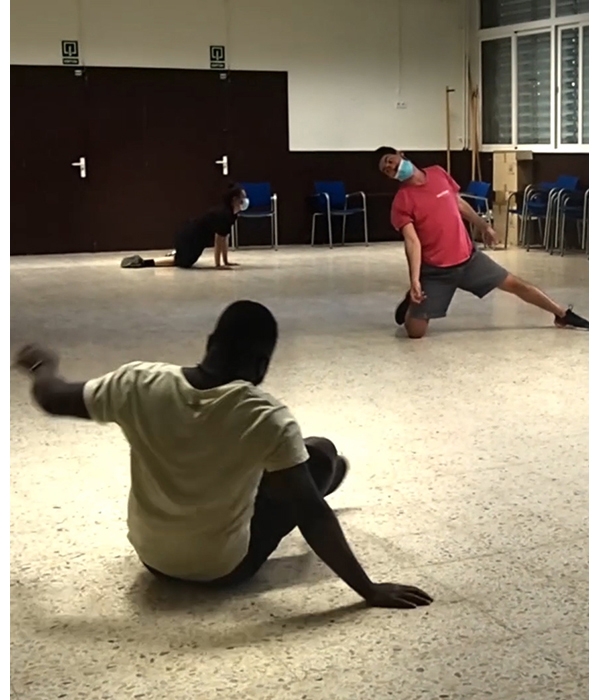
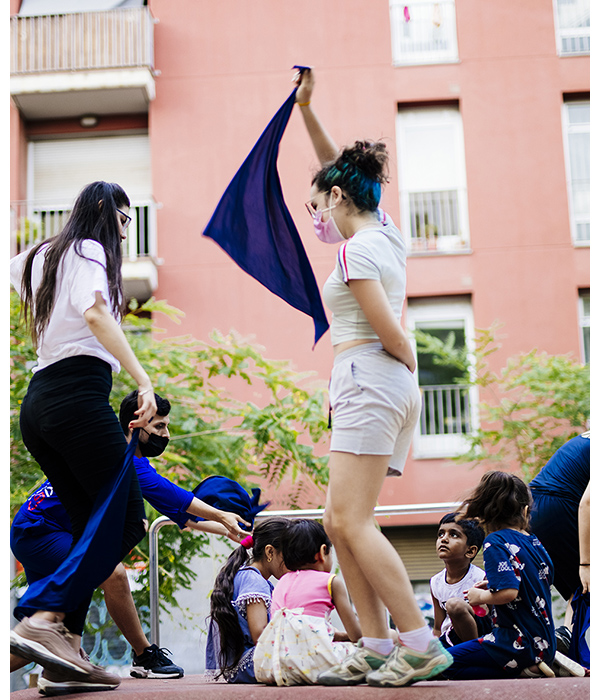
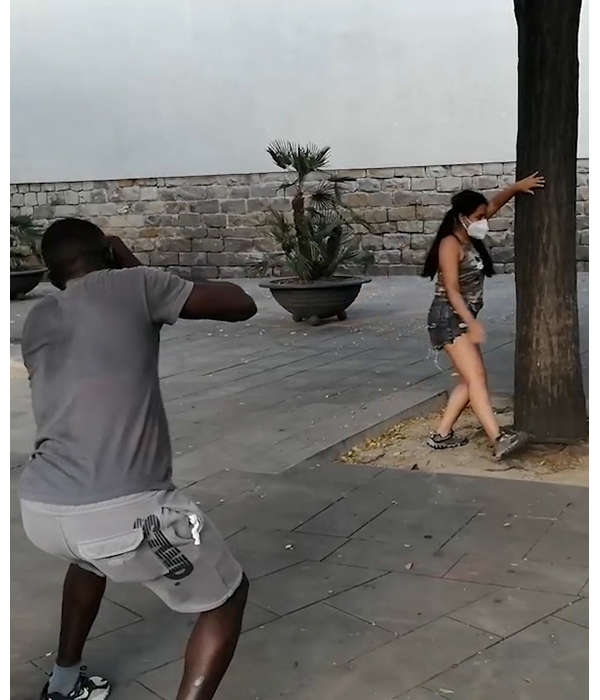
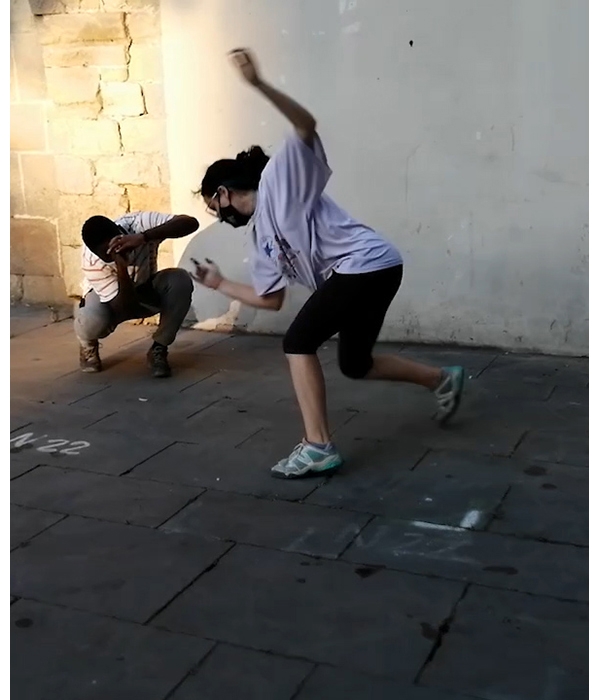
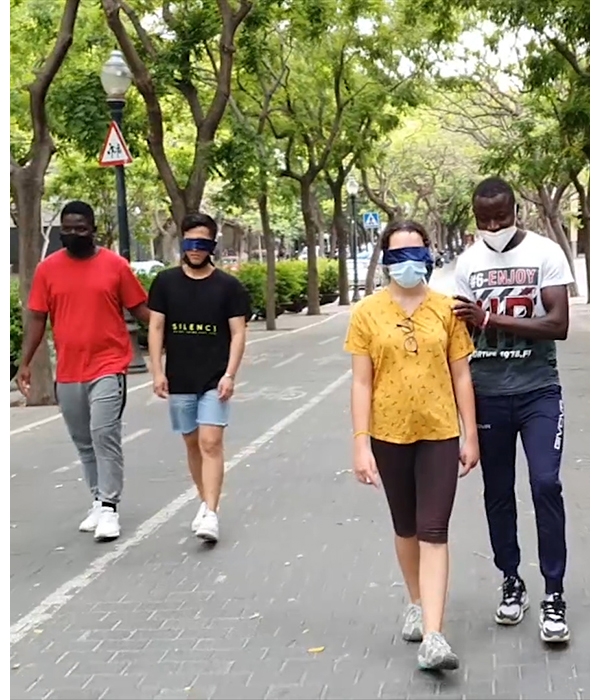
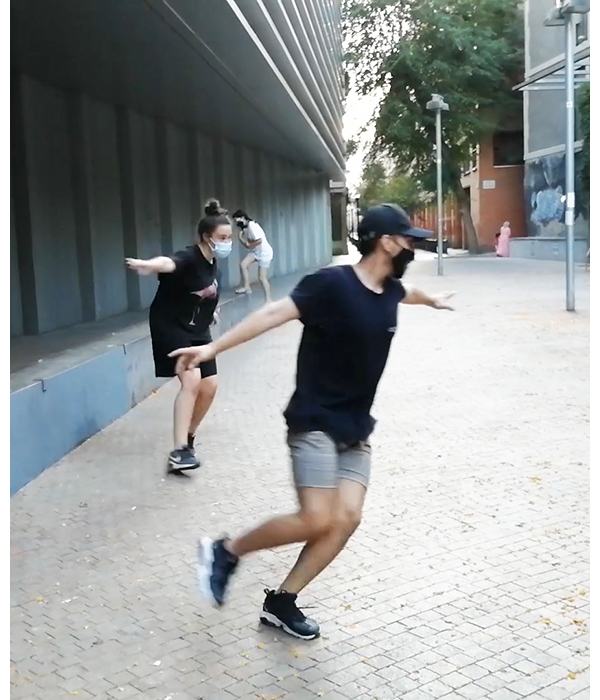
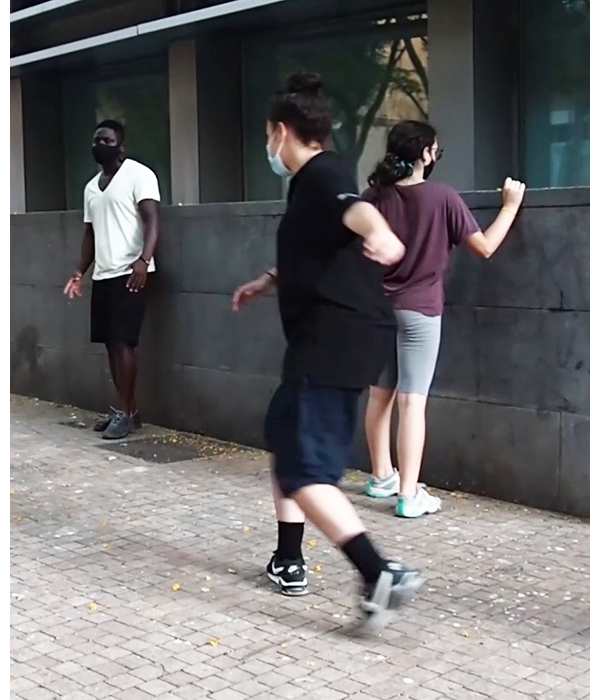
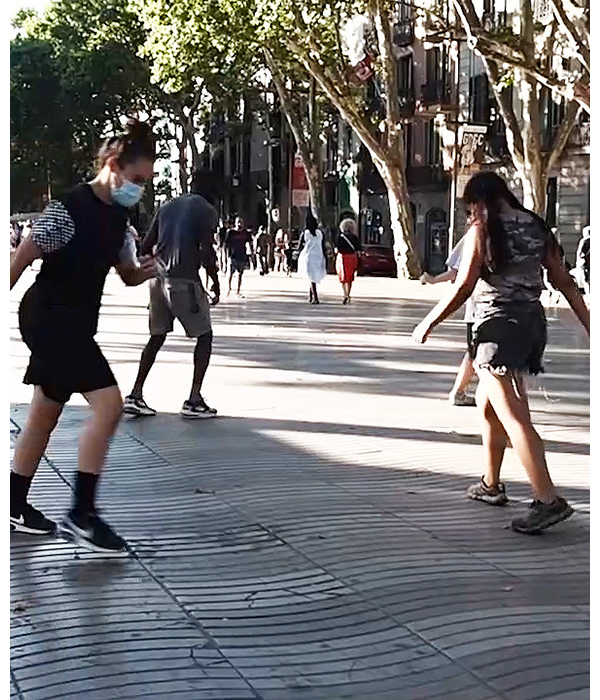
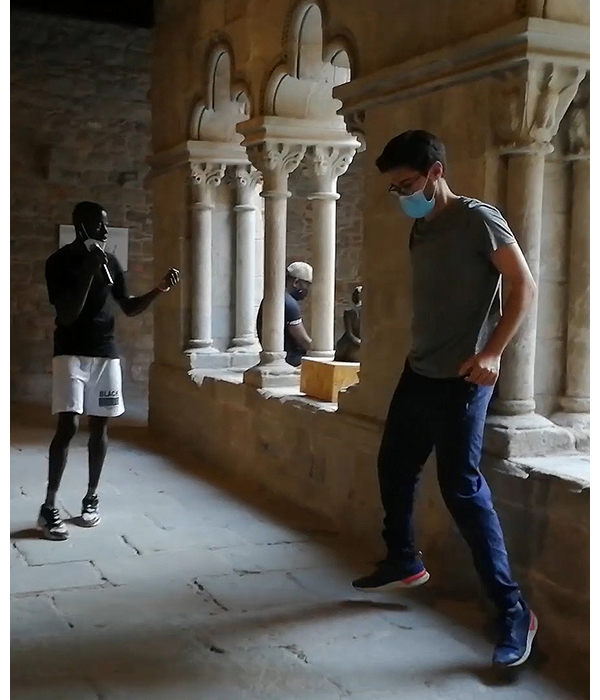
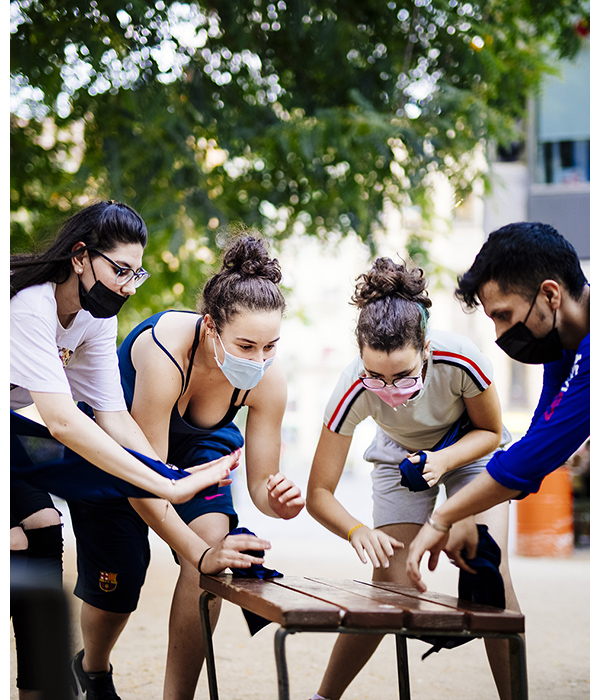
site dance performances
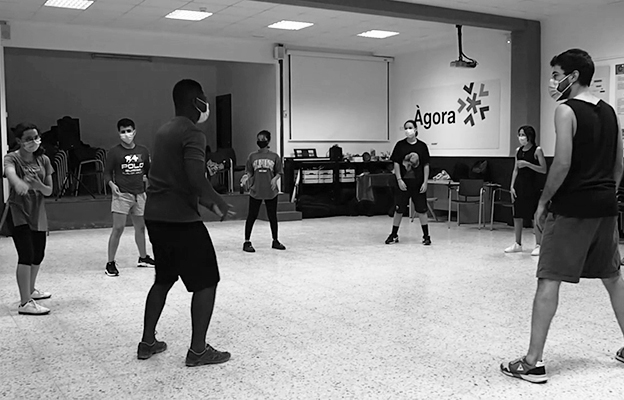
participants
Rania (18, Morocco), Narjiis (19, Morocco), Hind (25, Morocco), Ona (15, Catalonia, Spain), Henry (17, Ghana), Dana (17, Ghana), Yasmin (15, Catalonia, Spain), Faria (16, Catalonia, Spain), Jean Pierre (24, Peru), Alexandra (21, Peru). Organization and logistics: Ester Bonal (Director Xamfrà), Estefania Soler (Xamfrà). Audiovisual work: Laura Abad (photography), Marta Romero and Ana Moya (camera and video editing). Special thans to: Elisenda Guardiola and Gemma Andreu (Servei de Proximitat i Veïnatge de Ciutat Vella), Joan Cabot (St Pau del Camp Monastery), Sandra Jurado (Median T la Danza).
support and collaboration
The research was funded by The Cultural Initiative Support Office (OSIC), Cultural Department, Generalitat of Catalonia, Spain (CLT019/20/000154). It counted with the support and promotion in the format of an artistic research residency at ‘Xamfrà, Centre de Música i Escena del Raval’ [Raval’s Music and Performance Centre], Barcelona.

